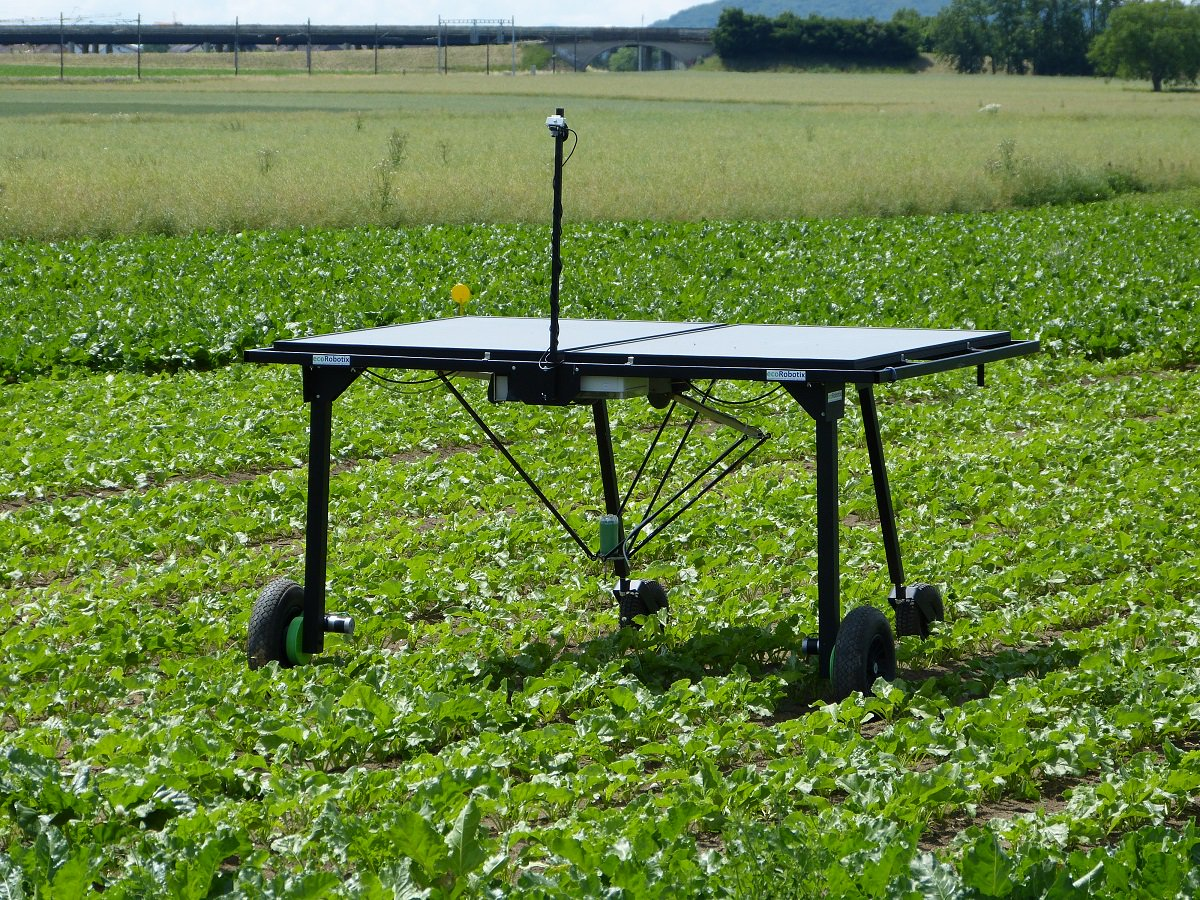The rise of alternatives to crop protection chemistry

How to implement mechanised or biological weed control in agriculture? How to gradually use biological stress as a crop protection strategy? Last week, at the 70th edition of the International Symposium on Crop Protection (ISCP) at Ghent University, these questions were addressed during some inspiring plenary talks. This annual event is an ideal opportunity to meet over 400 international experts in crop protection and to discuss the latest innovations in the crop protection field.
It is clear that alternatives to crop protection chemistry are on the rise in order to enhance the toolbox of the farmer. Alternative approaches will also be covered at the 14th IUPAC International Congress of Crop Protection Chemistry in May 2019 because the IUPAC congress covers all relevant emerging trends in crop protection and will also host the next ISCP.
Automated weed control
“The development of automated crop protection tools amounts to only 1/25th of the total development costs of specific crop protection products”, claimed dr. Steven Fennimore. He is an eco-physiologist at the University of California and is specialised in automated weed management. Tired of the constant doubt about the possible harms of crop protection products for humans and nature, he began to focus on mechanical weed control via machine vision technology and pattern recognition.
“We are currently testing three potential automated machines that make use of sophisticated vision technology to detect weeds”, dr. Fennimore continued. “These machines recognise either systemic markers, topical markers or physical markers that make use of absorbent materials, fluorescent paint or just plastic straws, respectively. Our innovations are promising, but it remains difficult to compete against the large industry of crop protection products. However, as long as our USA-government keeps allowing Mexicans to weed by hand for a minimum wage, everything will turn out just fine”, dr. Fennimore ironically concluded.
Biological control of weeds
How to handle undesirable invasive weeds without using crop protection products? Dr. Dick Shaw, UK director of the Centre for Agriculture and Biosciences International (CABI), thinks that part of the answer is via biological control. “Invasive weeds can be restrained by efficiently introducing their natural enemies such as pathogens, insects or herbivores”, claimed dr. Shaw.
Several success stories highlight the potential effectiveness of this approach, including the quick repression of the invasive Prickly Pear cactus in Australia with the South American cactus moth or the efficient use of ducks in Asian paddy fields to restrain harmful insects and weeds. “The problem hereby is that all success stories hitherto were a coincidence, whims of nature. In contrast, when we develop something, it is never that effective”, dr. Shaw said.
“Nevertheless, I believe that biological control of invasive weeds via the deliberate deployment of natural enemies has great potential in agriculture, but more awareness among scientist and farmers is definitely needed”, Dr. Shaw remarked.
What does not kill you, makes you stronger
“The dose makes the poison”, dr. Regina Belz started the last plenary session of the day by quoting Paracelsus, an alchemist from the Middle Ages. She introduced us to the concept called ‘hormesis’ and its potential applications in crop protection. “Using a low dose of crop protection products on crops induces biological stress and might enhance growth and protect them against natural enemies”, explained dr. Belz. Hormesis is thus characterised by a low dose stimulation, high dose inhibition of toxins to plants. Nowadays, only a few commercial applications of hormesis exist, for example as a ripener for sugarcane or as a preventive herbicide protector.
“Nevertheless, hormesis is a complex phenomenon that only has a very limited window to operate in”, dr. Belz continued. “Many external factors in field situations influence its functioning and are currently thus impossible to control (e.g. temperature, water supply, etc.). But who knows what the future might bring.”
IUPAC 2019
Professor Pieter Spanoghe, vice-chair of 70th ISCP, will also host the 14th IUPAC International Congress of Crop Protection Chemistry in May 2019. The program of the IUPAC congress is guided by emerging trends in the crop protection domain with a focus on crop protection chemistry. “However, we have to focus on the future and will also take into account promising alternatives to crop protection chemistry at the IUPAC Congress”, prof. Spanoghe emphasises. “In the end, farmers need sustainable solutions that work, irrespective of their chemical, biological or mechanical structure.”

